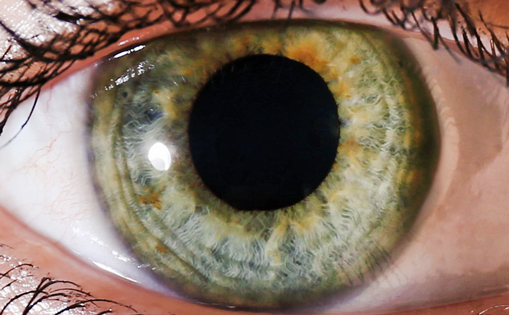The demand for intraocular lenses (IOLs) pre-loaded in single-use sterile injectors is a logical step in the evolution of cataract surgery. The intention is not only to dispense with the surgeon or his/her assistant loading the IOL in a conventional injector, but also to directly implant the IOL inside the eye correctly and safely, reducing contact with the environment to virtually zero, and ultimately to make surgery easier and safer, preventing endophthalmitis.
The demand for intraocular lenses (IOLs) pre-loaded in single-use sterile injectors is a logical step in the evolution of cataract surgery. The intention is not only to dispense with the surgeon or his/her assistant loading the IOL in a conventional injector, but also to directly implant the IOL inside the eye correctly and safely, reducing contact with the environment to virtually zero, and ultimately to make surgery easier and safer, preventing endophthalmitis.
The obvious advantage of such a technique is the elimination of risks such as mistakes during IOL handling (incorrect placement inside the cartridge, accidental contamination, etc.) or even the use of an improper injector device, resulting in a damaged lens. The latter point demonstrates that there is a big difference between a single-use injector that has to be loaded conventionally and a truly pre-loaded IOL. To fulfil this demand, LCA Pharmaceutical has designed the GENIUM AFI 5.5 Prepak, an innovative truly pre-loaded hydrophilic IOL (see Figure 1).
Clinical Evaluation of the GENIUM AFI 5.5. Prepak Methods – Study Design and Subjects
A European multicentre open clinical study was designed with the primary objective of assessing the performance of the GENIUM AFI 5.5 Prepak in terms of visual acuity improvement, and then to determine any potential adverse effects peri- and post-operatively. Overall therapeutic efficacy was also evaluated (assessment by investigator). The study was conducted between May 2004 (first inclusion) and June 2005 (latest results). The study protocol was based on ISO 13503-7, including three reports (pre-, peri- and post-operative at 2±1 months). Ten investigators were selected, each treating 30 patients suffering from senile cataracts. Three hundred and one patients were treated (one investigator treated 31 patients).
The inclusion criteria were age greater than 50 years (both sexes) and scheduled extraction of the crystalline lens by phacoemulsification followed by implantation in the capsular bag of a GENIUM AFI 5.5 Prepak pre-loaded IOL. The exclusion criteria were traumatic cataract, uveitis, keratitis or other inflammation of the anterior segment, uncontrolled glaucoma and any retinopathy that would prevent satisfactory visual acuity being obtained. The patient group ranged from 46 to 99 years of age (mean age 75.2±8.1 years) and 64% were women. Age distribution is shown in Figure 2. Very few deviations to the protocol were accepted: three patients with early senile cataracts and 13 patients with posterior segment diseases who achieved visual improvement were included. The GENIUM AFI 5.5 Prepak was implanted in all patients. The whole range of powers (+14.0 to +26.0D) available at the time of the study were used. Distribution of these powers is shown in Figure 3.
Device Description
GENIUM AFI 5.5 Prepak is a foldable acrylic hydrophilic IOL pre-loaded in a single-use injector. The whole system is delivered sterile, double-packed in a sealed glass vial containing a solution. Sterility is obtained by steam autoclaving. The GENIUM injector and the amniotic fluid index (AFI) IOL have been specifically designed together for an easy and reproducible injection. The GENIUM injector and IOL have several unique features:
• The GENIUM injector is simple, being made from two major components – syringe and piston – and extremely compact.
• The syringe, or ‘injector cartridge’, containing the unfolded IOL is made of transparent polypropylene, allowing full visual control at any stage of folding and injection. The bevelled and flattened tip is designed to go through a 3.2mm incision without enlarging it.
• The patented ‘folding piston’ has two exclusive flexible pushing rods to maintain the IOL in perfect alignment during folding and injection. As it is made of polyetherimide it is strong, stable and heat-resistant, and its natural amber colour contributes to the ease of visual control.
• No separate IOL container is used and no mechanism is required to compress the IOL prior to pushing the piston.
• The lubricating viscoelastic solution (ophthalmic viscosurgical device [OVD]) can be easily introduced from the injector tip using a standard cannula.
• A bimanual technique is recommended when handling the GENIUM injector as it offers better control. Also, a retraction of the piston is required to release the IOL; this allows the IOL to be directly injected in a horizontal position and placed directly in the capsular bag, without needing to use another instrument.
• The patented AFI tripod IOL is specifically designed to fit the GENIUM injector. The two superior haptics in contact with the rods keep the IOL aligned until the optic is folded; the narrow single inferior haptic can precede the optic during injection.
• The AFI tripod IOL is easy to place and to centre, offering great stability inside the capsular bag.
Results
Peri-operative Results
Peri-operative results are shown in Table 1.
Post-operative Results
Quantitative results comparing pre- and post-operative outcomes are shown in Table 2. Keratometry changes were also analysed: 85% of corneas remained unchanged at ±0.25D, indicating that 3.2mm incisions with the GENIUM AFI 5.5 Prepak do not induce astigmatism. Visual acuity (VA) recovers well with the GENIUM AFI 5.5 (see Figure 4). Of 47 patients with a pre-operative VA of 0.1 (1/10 = 20/200) or less, 41 recovered 0.8 (8/10 = 20/25) and none recovered less than 0.5 (5/10 = 20/40). The patients with a final VA of 0.4 (4/10 = 20/50) or less had corneal problems or demonstrated poor co-operation, but their VA was always improved. Comparison of refractive correction with the refractive target shows a significant residual myopia of around -0.50D (sphere). Therefore, the A-constant is obviously oversized at 118.3D. As calculations performed by investigators are ignored, a statistical approach was made using the SRK II formula. The A-constant, re-calculated from SRK II, shows a relatively wide distribution (see Figure 5). However, this distribution is narrower for several individual investigators than for the whole group, confirming that surgeons should use their own statistics and use only their personal A-constant. A comparison of intraocular pressure (IOP) pre-operatively and two months post-operatively does not reveal any significant difference, as shown in Figure 6/i>. Only one glaucomatous patient (not represented in the figure) had an increased IOP: from 24 to 27mmHg. No correlation between IOP and use of any specific OVD has been established. Also, no cases of abnormal excessive IOP were recorded within 24 hours following surgery. No significant variation was noticed between preand post-operative IOP at two months.
Adverse Events
There were only four adverse events during surgery: one case each of capsule rupture, capsule micro-rupture, zonula de-insertion and torn IOL (immediately replaced by an identical IOL at the same power). Other observations during surgery were: two cases of the IOL being trapped in the injector; two cases where there was difficulty with release/unfolding of the haptics; two cases where the IOL was considered ‘mobile’ on day zero (both became stable later); one case of mild deformation of the pupil; and five cases of punctual white deposits on the surface of the lens. These deposits are reported to stick strongly to the IOL and are therefore difficult to remove by aspiration. However, they neither affect patient vision nor induce reaction and they have all disappeared spontaneously within three months following surgery.
Assessment by Investigator
The results of the assessment of overall therapeutic efficacy by the investigator are shown in Table 3.
Discussion
The clinical results obtained with the GENIUM AFI 5.5 Prepak are excellent: improvement in VA is largely significant. No major peri- or postoperative adverse effects were reported. The majority of investigators were highly satisfied and/or satisfied with the therapeutic efficacy of the GENIUM AFI 5.5 Prepak, with 98% reporting improvement in VA, 94% reporting ease of use of the device and 100% reporting its ability to prevent endophthalmitis. A first minimal correction has been made to the estimated A-constant, lowering it to 118.0D.
Long-term Follow-up
Not even one adverse event following implantation of the GENIUM AFI 5.5 Prepak has been reported to the Ministry of Health from its very first presentation at the French Society of Ophthalmology (SFO) convention in Paris in May 2004 to the time of writing (August 2008). The usual questions about the rate of posterior capsule opacification (PCO) with the GENIUM AFI 5.5 Prepak can be answered only with the fact that none of the foldable IOLs made by LCA from the same hydrophilic material over a preiod of more than 10 years is significantly different from the reference hydrophobic material. To illustrate this, Figure 7 shows photographs over a two-year period (seven days, three months, six months, one year and two years) of one eye implanted with a GENIUM AFI 5.5 Prepak; the second eye of the same patient was implanted a few days later with a hydrophobic SA 60 lens (Alcon) by the same surgeon using the same cataract extraction technique in the same environment. Photographs of the SA 60 at six months, one year and two years are provided for comparison. At two years there is no visible cell proliferation on the posterior capsule behind the GENIUM AFI 5.5 Prepak: edge contact with the capsule is continuous for both optic and haptics. Tension in the capsule is permanently maintained (as proved by folds outside the optic). The result is a stable and well centred IOL, providing good vision to the patient. From these photographs it is not possible to conclude whether there is any superiority of the hydrophobic material used by Alcon over the hydrophilic material used by LCA (istacryl and genium, respectively), in terms of the risk of PCO.
Evolution of the GENIUM AFI Prepak
Since the initial introduction of the Genium AFI Prepak onto the market in 2004, several important improvements have been made to the device to meet recent requests in eye surgery. A new IOL with a 6.0mm diameter (GENIUM AFI 6.0 Prepak) has been developed to complete the range (the AFI 5.5 is being continued).
Also, a new tip design for the injector with smaller inside and outside diameters and a thinner wall has been introduced to provide a better fit with incisions measuring between 3.0 and 3.2mm (see Figure 8). One issue with larger optics being injected through a smaller tip is the importance of the lubrication provided by the OVD. While the tendency is to use a cohesive OVD at this stage of the surgery, it must be pointed out that very cohesive OVDs do not easily coat the inside of the injector and therefore provide only poor (or even no) lubrication to the GENIUM injector. Therefore, after successful experiments with various OVDs, it has been decided that using an OVD developed by LCA was the best guarantee for successful injections using the GENIUM AFI 6.0 Prepak. A specific pack was therefore arranged with the TWO ONE OVD, called OVD Prepak.
A final improvement is that in 2007 the polypropylene used to make the injector syringes was changed to a different pharmaceutical grade. The new polypropylene material does not release its additive lubricating agent a long time after sterilisation, as the first material did. This agent seemed to be responsible for the white deposits sometimes seen on IOLs. Their chemical nature is not confirmed, but we believe they could be fat acid derivates, such as calcium stearate, used for processing polypropylene.







